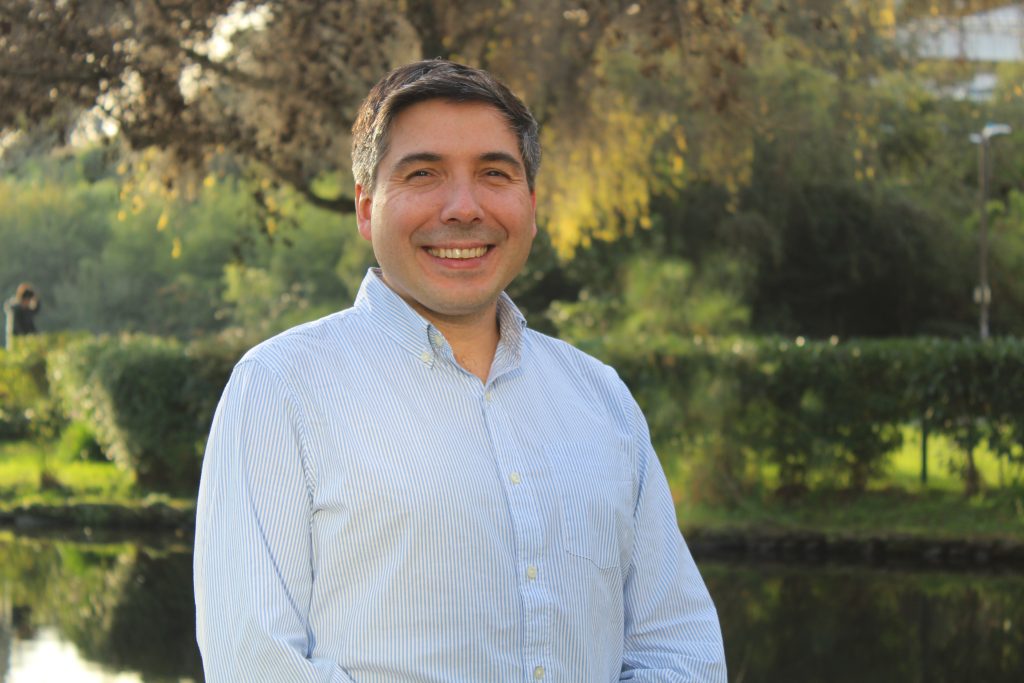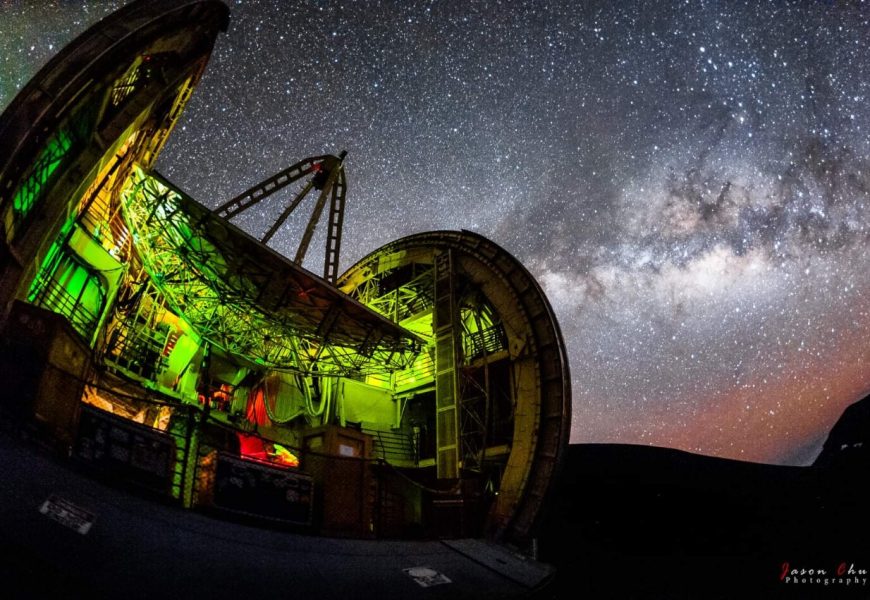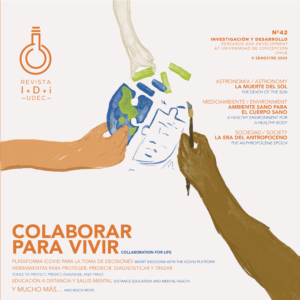By: Marllory Fuentes Salazar and Franco López Flores / departamento.astronomia@gmail.com | Photographs: Courtesy of Communications and Outreach, UdeC Department of Astronomy
What do Hawaii and northern Chile have in common? The skies of both have a unique opportunity for astronomical observation. In fact, the Submillimeter Observatory of the California Institute of Technology (Caltech) is located on the island at 4,070 meters above sea level near the summit of the Maunakea. This observatory is the star of an international collaborative project that will leave the University of Concepción (UdeC) as the first Chilean University to have complete control over a radio telescope of this magnitude.
The CSO (for its acronym in English) has just finished dismantling and disconnecting its systems. Why is it being dismantled? To travel thousands of kilometers to the coast of northern Chile and from there to the Chajnantor plain, where it will share views with advanced international facilities, such as the ALMA observatory or the APEX radio telescope.
A state-of-the-art instrument for cutting-edge research
The Leighton Chajnantor Telescope (LCT) project, which is what the observatory will be called once it arrives in Chile, has the support of Caltech, the Shanghai Normal University (SHNU), and the University of Concepción through the UdeC Astronomy Department, but more specifically the UdeC Center for Astronomical Instrumentation.
This group, comprising astronomers and engineers, among other disciplines, is in charge of the technical aspects of the radiotelescope’s relocation, such as the software, antenna motorization, or even the construction of the new dome, which will be responsible for protecting the instrument from inclement weather.
As pointed out by the UdeC professor, CATA – Titans researcher, and director of CePIA, Dr. Rodrigo Reeves Díaz, “the LCT is one of the best telescopes of its kind for sub-millimetric astronomy, due to the shape of the main parabolic reflector and the minimal irregularities on its surface.”

The work from CePIA and UdeC
The more than a hundred students who managed to obtain their doctorates with data from the Observatory and thousands of publications made realize the potential of the LCT radio telescope, which will be able to continue serving international science but also Chilean researchers, given that by law, observatories in the country must allot 10% of their observation time to national astronomers.
However, the difficulties have not been few, given the sensitivity of the dismantling and transportation of equipment of these characteristics and the monetary implications, among other aspects. “But, for us (CePIA), a challenge is exactly what we are looking for: everything we can learn about the project is really positive,” said David Arroyo Reyes, CePIA Project Director.
In this regard, the professor of the Department of Mechanical Engineering of UdeC’s Faculty of Engineering, Dr. Cristian Canales C., said that one of the main challenges was “to analyze in how many parts we could split up the telescope’s transport to not affect its accuracy” along with the logistics or even the political aspects of the project, both in Hawaii and in Chile.
Trips of the technical team
To ensure the project works well, different delegations have had to travel to Hawaii to get to know the facilities and plan the steps for LCT’s dismantling and disconnection. To this, the dismantling of equipment related to calibration and its optical and movement system, among others, are added, tasks that are split between Hawaii and the University of Concepción.
Although everything is susceptible to date changes, the radio telescope is expected to arrive in Chile in 2024. “The assembly phase starts with the mechanical structure, followed by the installation of the equipment and then its conditioning. First, the land where it will be installed must be left ready: the foundation, the dome, things that are being prepared within the international collaboration,” David explained.
The efforts of the entire human team behind the LCT project are countless. In addition, the possibility of fully accessing the radio telescope, which will be operated from the University of Concepción, adds value to the growth of professionals who wish to study at this University. “It is expected that this telescope will be able to operate in our country for at least 10 to 15 years. It has been laid down that an international panel will evaluate its operation every five years and thus extend the project’s useful life,” commented CePIA’s Director.
“In the future, the main challenge is the observatory’s operation and the motivation for the LCT project. This involves taking advantage of an outstanding platform to guide the formation of advanced human capital in science and technology, and that the knowledge remains within Chile and in the Bio-Bio region,” added David Arroyo.
Last modified: 3 de septiembre de 2025






